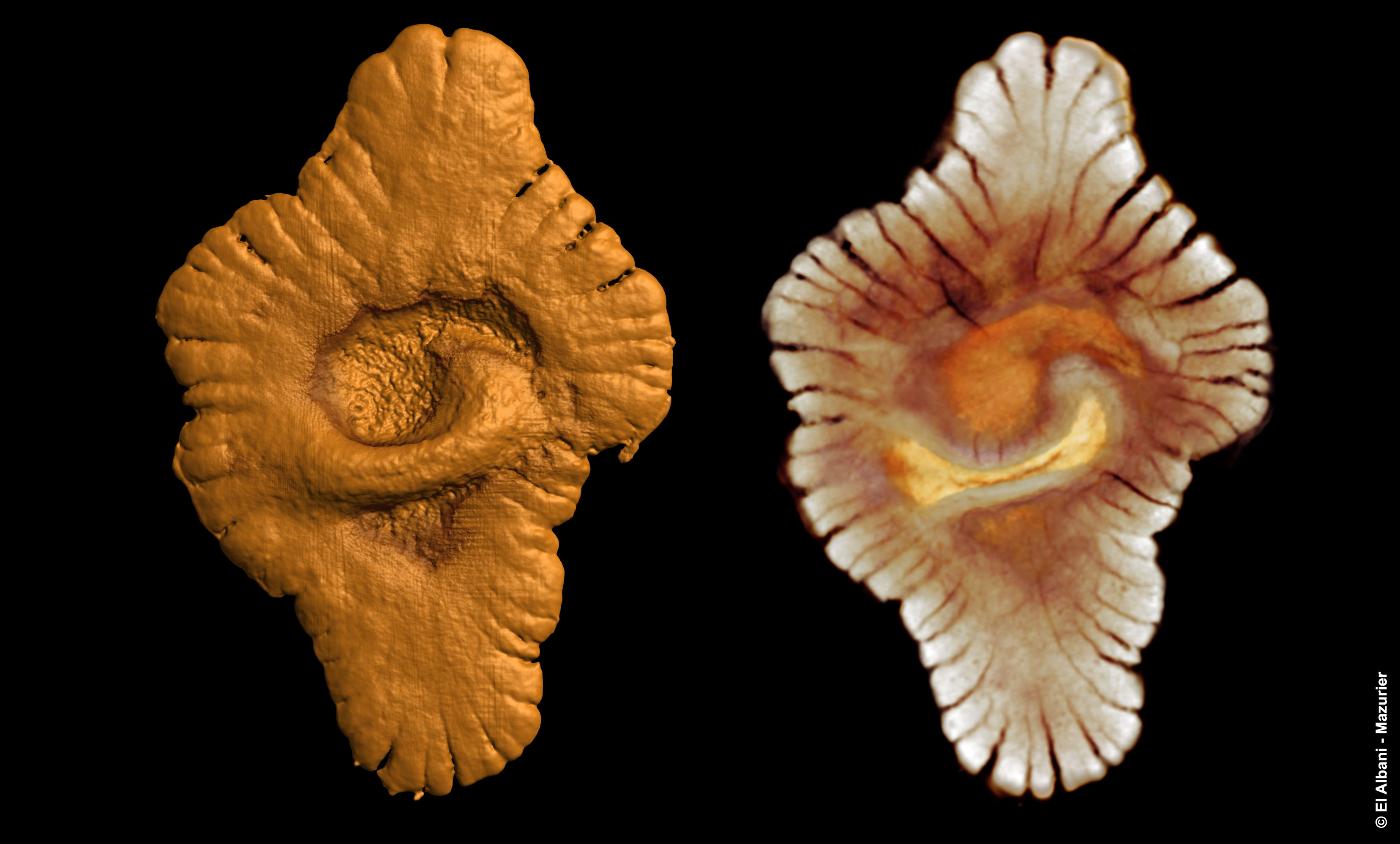Scientists working in West Africa have uncovered an incredible clutch of fossils that appear to represent the earliest ever remains of complex life.
The discovery, published in Nature by University of Poitiers, France, researcher Abder El Albani, contains dramatic photographs of the 1cm diameter organisms that were discovered in in southeast Gabon encased in sedimentary rocks, determined isotoptically to be over 2.1 billion years old.
 The fossils, which appear to consist of cooperating colonies of cells, macroscopically resemble fried eggs with a central "body" surrounded by flat sheets or lamellae of tissue which is further divided by a pattern of radial slits. The arrangement of the material suggests that these creatures were growing by adding tissue to their periphery and functioning as a multicellular organism. They do not resemble anything observed previously from this epoch.
The fossils, which appear to consist of cooperating colonies of cells, macroscopically resemble fried eggs with a central "body" surrounded by flat sheets or lamellae of tissue which is further divided by a pattern of radial slits. The arrangement of the material suggests that these creatures were growing by adding tissue to their periphery and functioning as a multicellular organism. They do not resemble anything observed previously from this epoch.
The fossils also contain the chemical signature of sterane, a sterol derivative which is regarded as a hallmark of eukaryotic life, indicating that these organisms were distinct from the more primitive prokayotic life known to have gone before.
Even more intriguing, analysis of the iron composition of the fossilised material also suggests that they were oxygen-using organisms, which fits with the fact that they date from about 200 million years after the "Great Oxidation Event," when the Earth suddenly went aerobic.










Comments
Add a comment